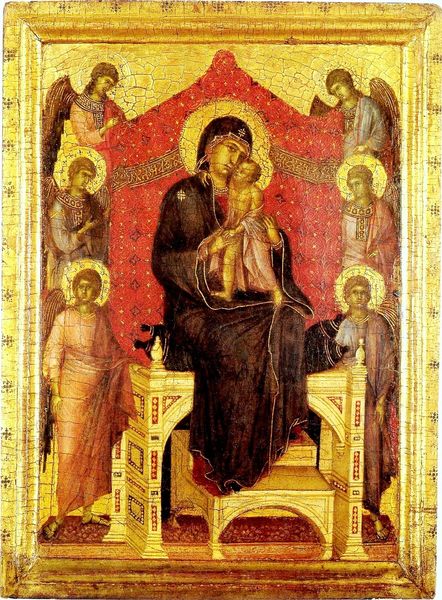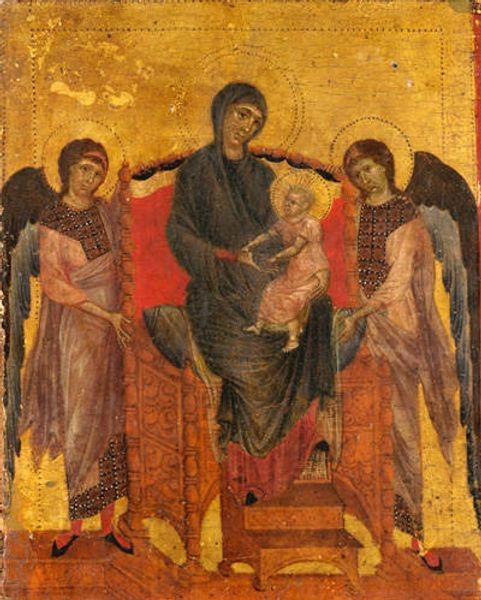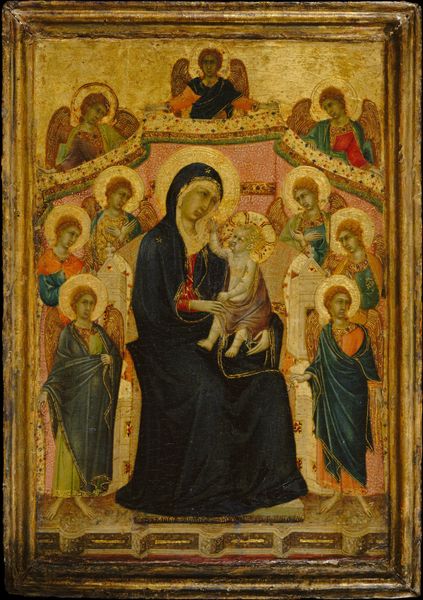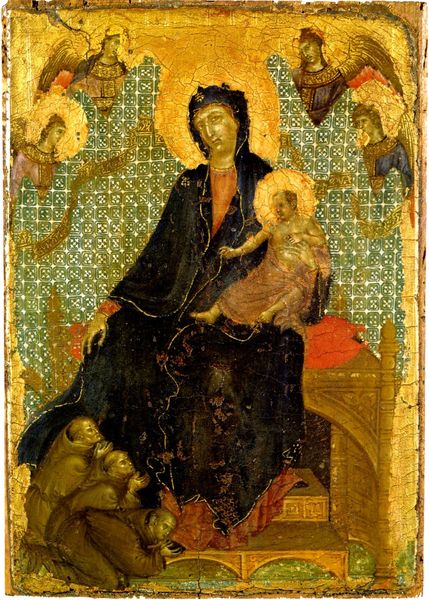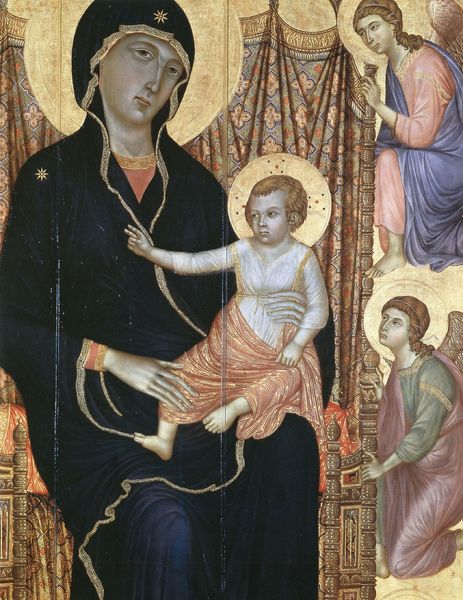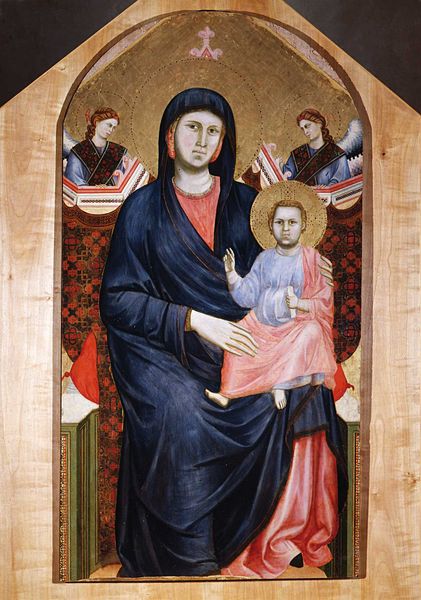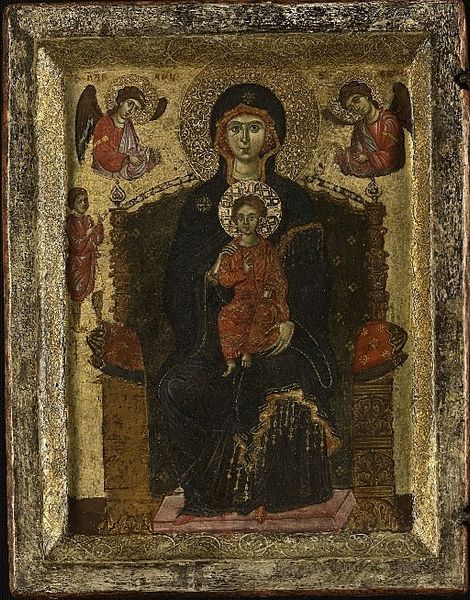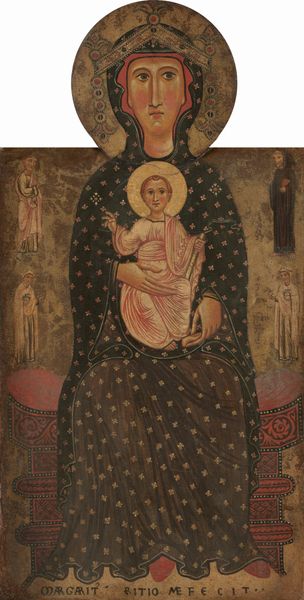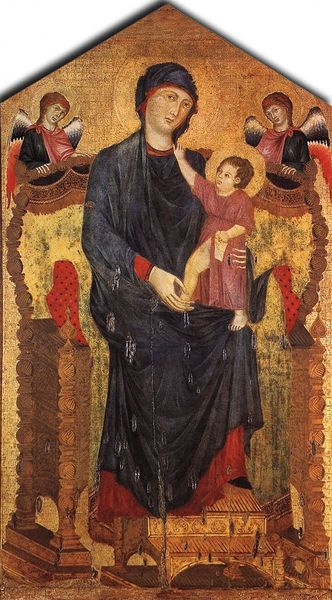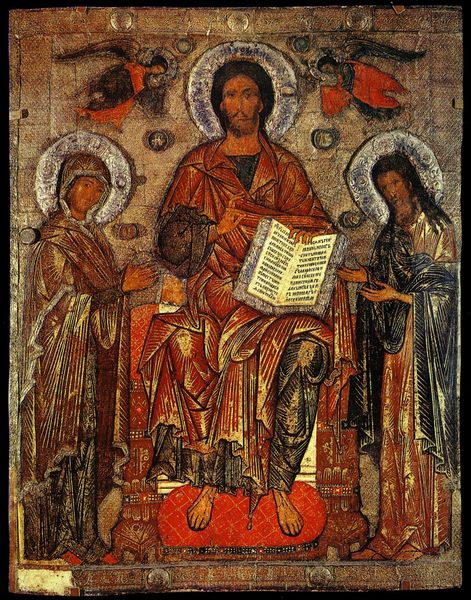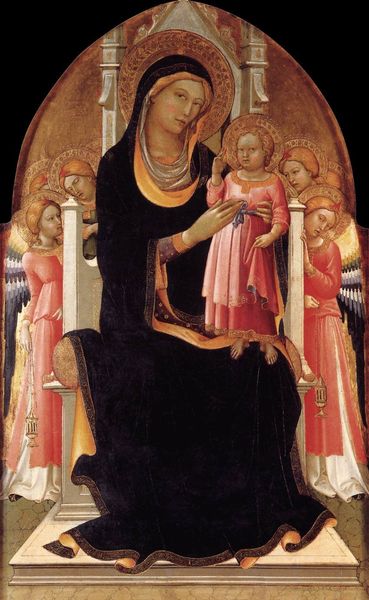
tempera, painting
#
portrait
#
byzantine-art
#
medieval
#
tempera
#
painting
#
sienese-school
#
holy-places
#
figuration
#
historic architecture
#
form
#
child
#
christianity
#
line
#
history-painting
#
international-gothic
#
angel
#
christ
Dimensions: 450 x 290 cm
Copyright: Public domain
Duccio painted this large panel, Madonna Rucellai, during the early 1300s, and it offers a window into the religious and social values of the time. Commissioned for the Laudesi brotherhood in Florence, it served not only as an object of veneration but also as a symbol of civic pride and collective identity. The Madonna, with her tender gaze and gentle grasp of the Christ Child, embodies a maternal ideal. The surrounding angels, rendered with delicate precision, create a heavenly court that reinforces her elevated status. But this isn't just a story of divine figures; it's a reflection of the earthly concerns of the Florentine people. The opulence of the gold leaf and the intricate detailing speak to the city's wealth and artistic prowess. The panel also subtly challenges the dominant patriarchal narratives. By placing the Madonna at the center, Duccio elevates the feminine principle, suggesting a more nuanced understanding of power and spirituality. Despite the traditional subject matter, the painting invites viewers to consider the complex interplay between faith, gender, and civic identity in the early Renaissance.
Comments
No comments
Be the first to comment and join the conversation on the ultimate creative platform.

